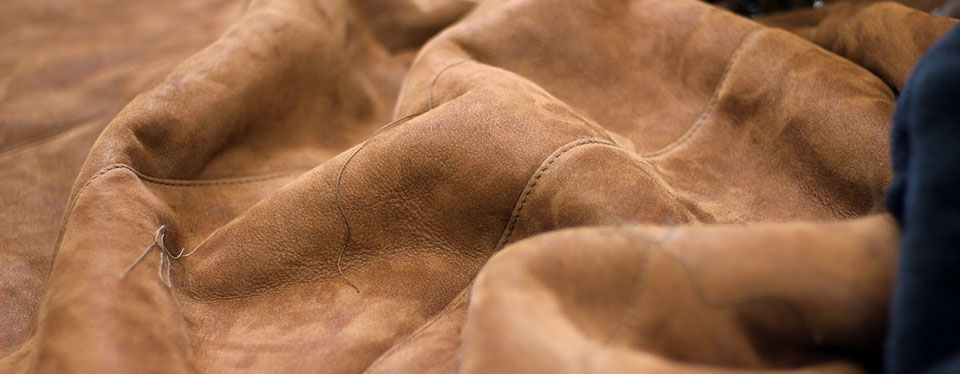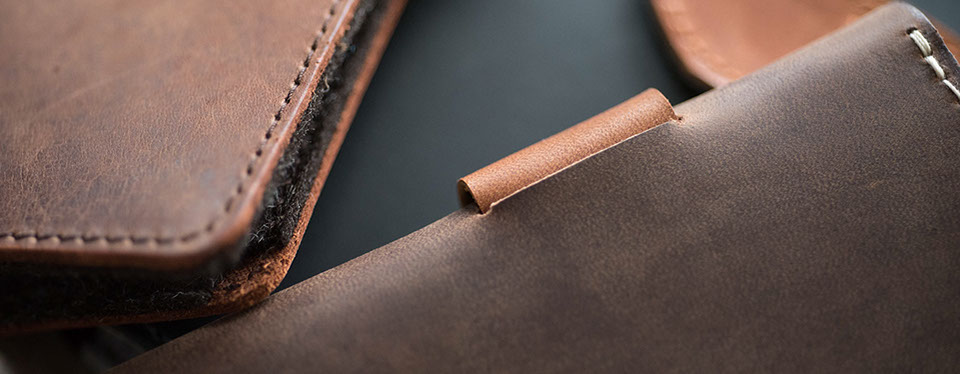Natural features and color
Upon tanned, naturalness-maintained leather, natural features partly come forward even stronger than on an uncolored leather surface. Through changes in the skin structure that are the result of injuries and healing, the absorbing capacity for dye of the skin changes. Scar tissue absorbs less color and accumulates it to the skin fibers. Scar tissue therefore often has less color intensity than healthy parts of the skin, thus creating some color variation.
The absorption and accumulation of dye is also influenced through the natural differences of the fiber density of the parts of the skin and different color shades within the skin. In uncolored leather or with light shades, the natural pigmentation of the skin can shine through and lead to different color shades within a skin. Likewise unevenness of the skin surface, for example skin folds, lead to color differences within a skin. At the bottom of the folds more dye accumulates than on the protuberant parts.
These color differences understandably also occur from skin to skin even if the leather skins were dyed together in the same dip. Like every animal itself also the animal skins are unique. This also impacts the dyeing behavior. The visual effects that result with the natural features however don’t tell anything about the other characteristics of the leather.

-crop-u66743.jpg?crc=472454490)

